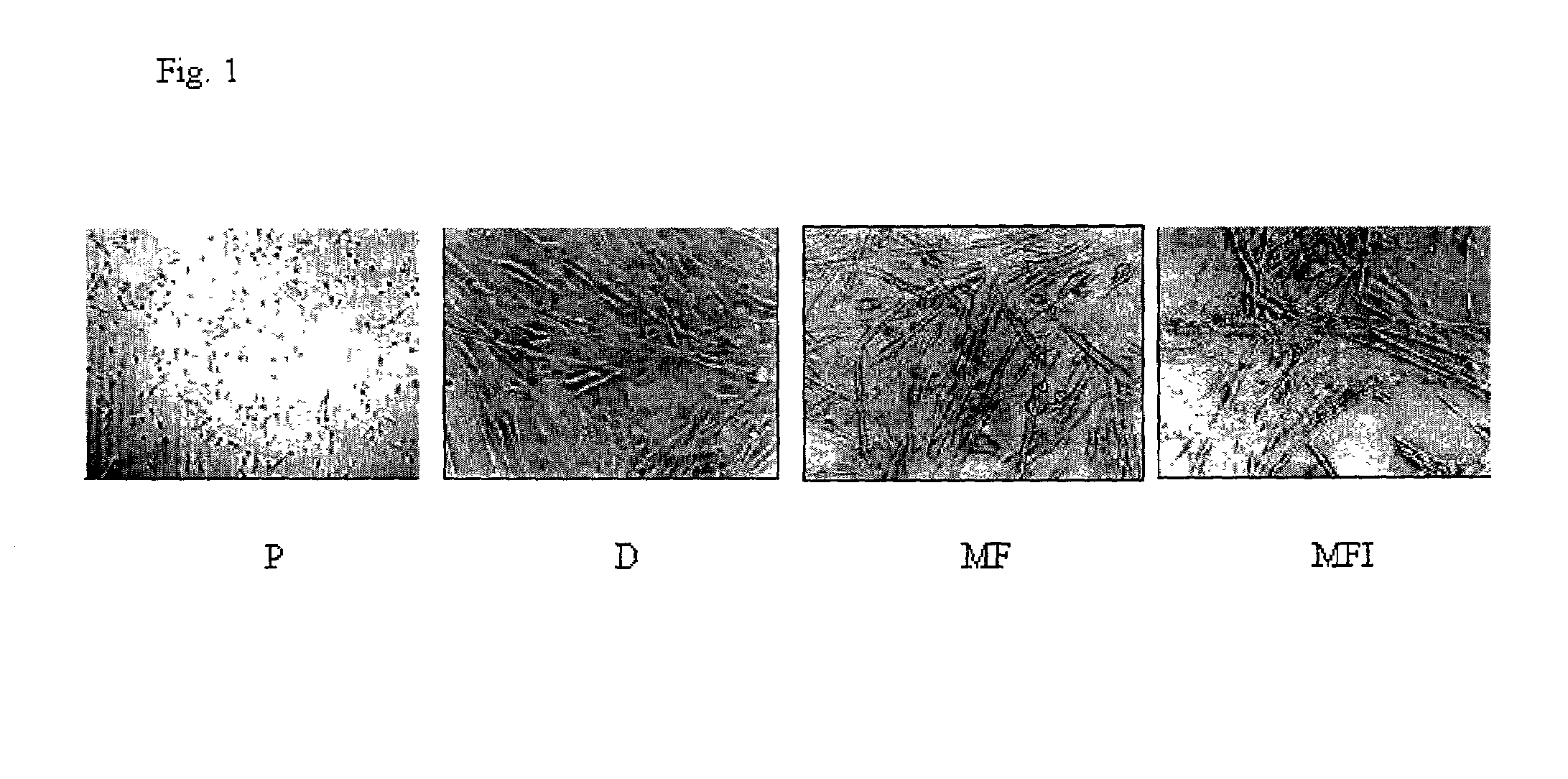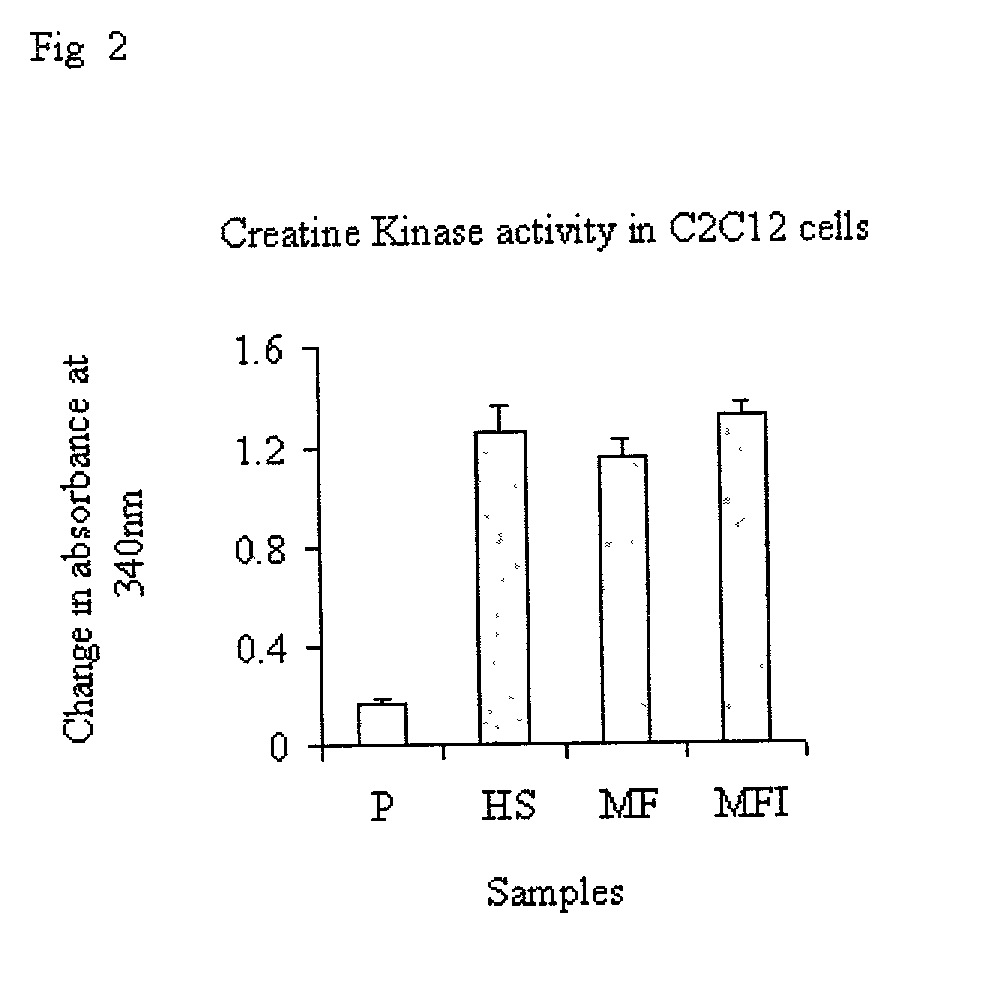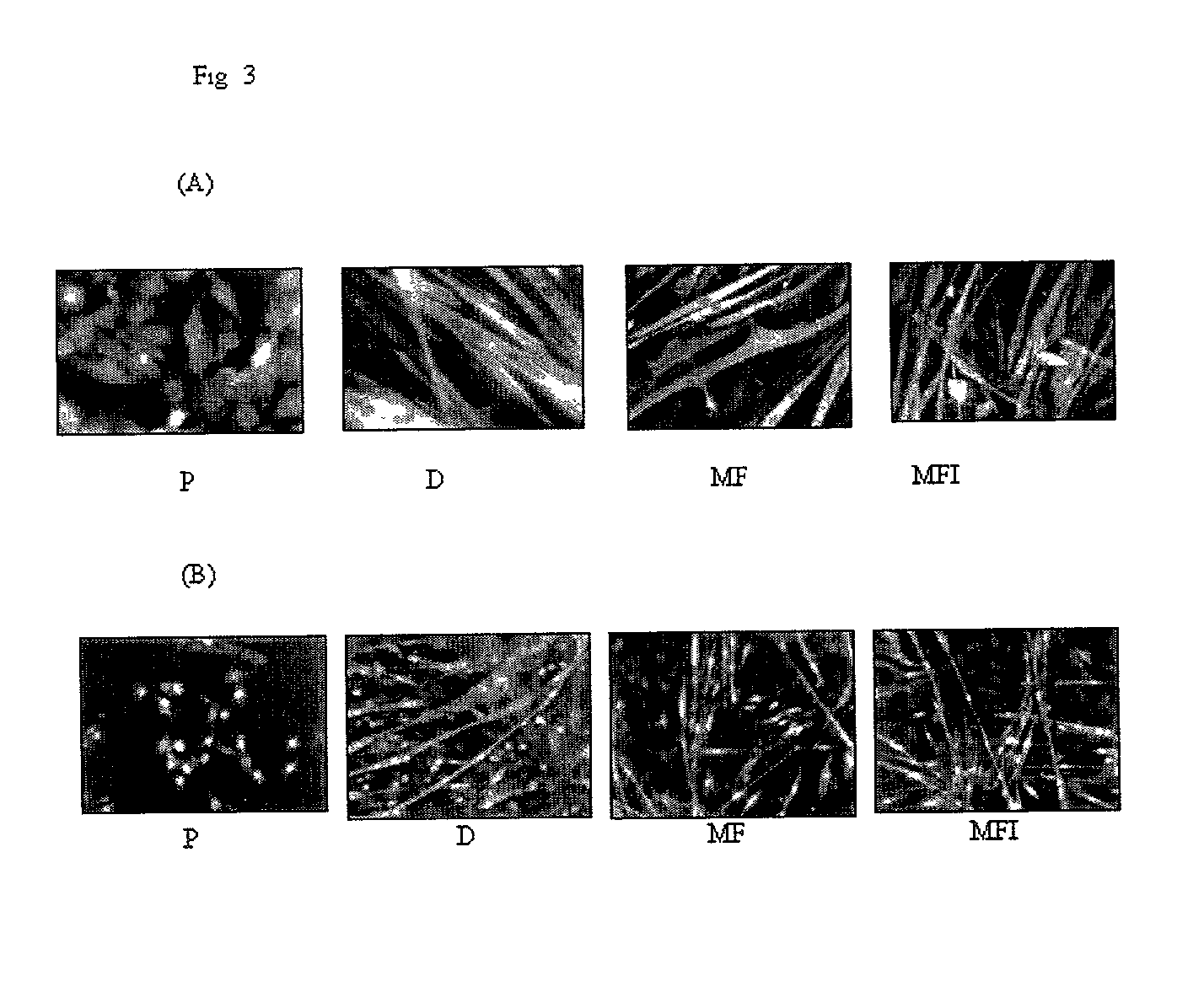Skeletal cell model to screen anti-diabetic compounds
a skeletal muscle and anti-diabetic technology, applied in the direction of immunoglobulins against animals/humans, peptides, plant/algae/fungi/lichens ingredients, etc., can solve the problems of limited use of troglitazone, poor performance in regard to disease assessment, and banned troglitazone. to achieve the effect of validating the insulin resistance of the muscl
- Summary
- Abstract
- Description
- Claims
- Application Information
AI Technical Summary
Benefits of technology
Problems solved by technology
Method used
Image
Examples
example 1
Generation of Insulin Resistant Skeletal Muscle Cell Line
[0067]The subsection below describes the generation of insulin resistance in skeletal muscle cell line in serum free medium in the chronic presence of insulin. The results show that insulin resistance was generated in terms of reduced tyrosine phosphorylation of IR and IRS-1 upon further insulin simulation.
[0068]C2C12 cells were grown in DMEM (Dulbecco's Modified Eagle Medium) containing 15% FCS (fetal calf serum). The cells were differentiated in serum free medium in the absence or chronic presence of 100 nm insulin. After three days the differentiation was complete. As a control, myoblasts were also differentiated in 2% horse serum (HS) containing medium, which is considered to be the best in vitro condition of skeletal muscle differentiation.
[0069]The differentiated cells in serum free medium in the absence or presence of insulin were used to check for their creatine kinase activity, myosin and myoD expression by immunofluo...
example 2
Screening Assay for Compounds that Enhance Tyrosine Phosphorylation of Insulin Receptor Signal Transduction Pathway
[0072]C2C12 cells were grown in DMEM containing 15% FCS. The cells were differentiated in a mixture of serum free medium in the absence or chronic presence of 100 nm insulin. During the last 24 hr, pioglitazone was added at a concentration of 50 μM. The cells were stimulated with insulin or left unstimulated as described earlier.
[0073]To validate the model and to establish the capacity of the methodology as a possible screening model, the cells were differentiated in absence or presence of 50 μM of pioglitazone during the last day of differentiation in MF and MFI. The lysates were run on gel and probed with antibodies against phosphotyrosine. As seen in the FIG. 6A, pioglitazone, an already known drug against insulin resistance, was able to increase the tyrosine phosphorylation of IRS-1 when it was stimulated by insulin. Furthermore, the increased tyrosine phosphorylati...
PUM
| Property | Measurement | Unit |
|---|---|---|
| pH | aaaaa | aaaaa |
| pH | aaaaa | aaaaa |
| pH | aaaaa | aaaaa |
Abstract
Description
Claims
Application Information
 Login to View More
Login to View More - R&D
- Intellectual Property
- Life Sciences
- Materials
- Tech Scout
- Unparalleled Data Quality
- Higher Quality Content
- 60% Fewer Hallucinations
Browse by: Latest US Patents, China's latest patents, Technical Efficacy Thesaurus, Application Domain, Technology Topic, Popular Technical Reports.
© 2025 PatSnap. All rights reserved.Legal|Privacy policy|Modern Slavery Act Transparency Statement|Sitemap|About US| Contact US: help@patsnap.com



